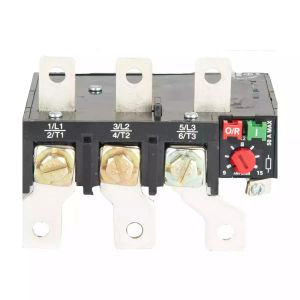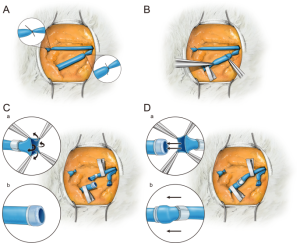The Ultimate Guide to – Overload Current Relay vs. Overcurrent Relay vs. Control Relay
5 min read
Relays serve as essential components for controlling, protecting, and monitoring electrical circuits in the space of electrical engineering and automation. They come in various types and configurations, each designed for specific functions and applications. Among these relays, overload current relays, overcurrent relays, and control relays stand out for their distinct roles in electrical systems. In this comprehensive guide, we’ll explore the differences between these relays, their working principles, applications, and significance in the world of electrical engineering.
Overload Current Relay
An overload current relay, also known as a thermal overload relay, is a protective device designed to protect electrical motors from damage due to overloading. When a motor draws more current than its rated capacity for an extended period, it can overheat, leading to insulation failure, winding damage, or even motor burnout. The overload current relay serves as a sensitive monitoring device that detects abnormal current levels and interrupts power to the motor to prevent damage.
How Overload Current Relays Work?
- Current Sensing:
The overload current relay is connected in series with the motor’s power supply. It continuously monitors the current flowing through the motor.
- Thermal Elements:
Inside the relay, there are thermal elements such as bimetallic strips or heaters. These elements respond to the heat generated by the motor current.
- Threshold Setting:
The relay is set to a specific current threshold, usually based on the motor’s rated current. When the motor current exceeds this threshold, the thermal elements heat up and trip the relay.
- Motor Protection:
Upon activation, the overload current relay interrupts power to the motor, preventing it from drawing excessive current and overheating.
Advantages of Overload Current Relays
- Precise Motor Protection:
Overload current relays provide precise protection against overloading, ensuring the motor operates within its safe limits.
- Prevention of Motor Damage:
By interrupting power to the motor when excessive current is detected, these relays help prevent motor burnout and costly repairs.
- Adjustable Settings:
Some overload current relays allow for adjustable current settings, providing flexibility to match the relay’s protection to the motor’s requirements.
Applications of Overload Current Relays
- Industrial Motors:
Overload current relays are commonly used in industrial applications to protect motors in pumps, conveyors, compressors, and other machinery.
- HVAC Systems:
They are essential components in heating, ventilation, and air conditioning (HVAC) systems, safeguarding compressor motors from overloading.
Overcurrent Relay
An overcurrent relay is a protective device designed to detect excessive current flowing through an electrical circuit and trip the circuit breaker to interrupt power. Unlike overload current relays, which are specifically designed for motor protection, overcurrent relays are versatile devices used in a wide range of applications to protect circuits and equipment from damage due to short circuits, ground faults, or other electrical faults.
How Overcurrent Relays Work?
- Current Sensing:
The overcurrent relay monitors the current flowing through the protected circuit.
- Current Setting:
The relay is set to a specific current threshold, which is above the normal operating current but below the circuit’s rated capacity.
- Trip Mechanism:
When the current exceeds the set threshold, the overcurrent relay’s trip mechanism activates.
- Circuit Protection:
The relay trips the circuit breaker or disconnects the circuit, preventing damage to equipment and minimizing the risk of electrical fires.
Advantages of Overcurrent Relays
- Versatility:
Overcurrent relays are versatile devices that can protect circuits and equipment from various electrical faults, including short circuits, ground faults, and overload conditions.
- Fast Response:
These relays have fast response times, quickly tripping the circuit breaker to interrupt power and prevent damage.
- Wide Range of Applications:
Overcurrent relays find applications in power distribution systems, substations, industrial machinery, and electrical installations.
Applications of Overcurrent Relays
- Power Distribution Systems:
Overcurrent relays are used to protect distribution lines, transformers, and switchgear from faults.
- Industrial Machinery:
They safeguard motors, generators, transformers, and other equipment from short circuits and overloads.
- Electrical Installations:
Overcurrent relays are essential components in electrical panels and distribution boards, providing protection to circuits and devices.
Control Relay
A control relay, also known as an auxiliary relay, is a type of relay used for controlling the operation of electrical circuits and devices. Unlike protective relays such as overload current relays and overcurrent relays, control relays are primarily used for switching operations, signaling, interlocking, and automation tasks. They play a crucial role in controlling the flow of electricity within a circuit and coordinating the operation of multiple devices.
How Control Relays Work?
- Input Signal:
Control relays receive input signals from switches, sensors, timers, or other control devices.
- Control Circuit:
When the input signal is applied, the control relay’s coil is energized, activating the contacts.
- Switching Operation:
The activated contacts of the control relay switch on or off, controlling the flow of current to the load circuit.
- Multiple Contacts:
Control relays often have multiple sets of contacts, allowing them to control multiple circuits or devices simultaneously.
Advantages of Control Relays
- Versatile Control:
Control relays offer versatile control capabilities, allowing for switching, interlocking, and automation of electrical circuits.
- Scalability:
These relays can be configured in complex control schemes, such as motor starters, lighting control systems, and industrial automation.
- Reliable Operation:
Control relays provide reliable switching and control of electrical circuits, ensuring proper operation of devices and equipment.
Applications of Control Relays
- Motor Control:
Control relays are used in motor starters and control panels to start, stop, and reverse the direction of motors.
- Lighting Control:
They find applications in lighting control systems for turning lights on or off based on timers, sensors, or manual switches.
- Automation Systems:
Control relays are essential components in industrial automation, controlling the operation of machines, conveyors, and production lines.
Read Also – What Is A Thermal Overload Relay?Types And Use Cases
Conclusion
In conclusion, overload current relays, overcurrent relays, and control relays are essential components in electrical systems, each serving distinct functions and applications. Overload current relays provide precise protection against motor overloading, preventing damage and ensuring safe operation of motors. Overcurrent relays offer versatile protection against various electrical faults, including short circuits and ground faults, safeguarding circuits and equipment. Control relays, on the other hand, provide versatile control capabilities, allowing for switching, signaling, interlocking, and automation of electrical circuits and devices.




